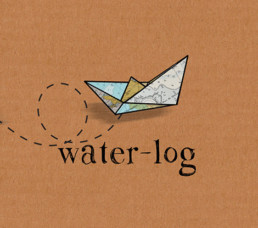The crossing of the Atlantic ocean from East to West is known among sailors everywhere as the ‘milk run’ primarily because it is supposedly straightforward and simple if approached at the right time of year. The instructions for sailing from the Canaries to the Lesser Antilles are very easy, so much so that the phrase “head South until the butter melts, then turn right” has been echoed in skipper hangouts the world over.
The ARC, the Atlantic Rally for Cruisers, does this same route every year but most sailing circles agree that they leave too early (they left on November 20th this year). Their timing is all geared up to arriving in the Caribbean just as soon as hurricane season has safely (ish) ended and in time for Christmas. Us non-ARC types agree that a December or January crossing is a much better plan. This gives the Easterly / East – North – Easterly trade winds time to well establish themselves and reduces your chances of long periods of motoring. Also there tend to be fewer squalls at this time in the season.
Every deadline, every passage of our trip so far has been engineered so as to see us leaving the Canaries at the right time. All four of us had spent considerable time and energy researching the crossing and all felt comfortable that we were hitting the blue at the right moment for some great sailing.
Milk run my arse!
No sooner had we left Gran Canaria then the wind whipped itself up into an unforecast force 6/7 with a beast of a swell to match. We bashed through this for the first two days, doubling up watches for safety and to keep up morale. We constantly checked our Navtex (a form of forecast information for those too far from the coast to receive VHF radio / FM radio forecasts) but it contained nothing that hinted at the conditions we were experiencing. The wind lessened a bit a few days in but we were still sailing with reefs in. After heading South to towards the Cape Verdes our expected Easterly-with-some-North-in-it wind actually contained a lot of South so again we were dealing with big swell, odd motion and squalls. The squalls started off as dry wind acceleration zones that would suddenly see us veering North. Later in our crossing they became sources of torrential downpours that would switch on and off at a whim. However, by the time we got the rain, it was at least warm enough to not mind too much. But, the rainy squalls did see us getting up to almost 40knots of wind.
Oh, and there was the night of the lightning as well…
Fear not, dear readers, it was far from a bad crossing in any of our eyes, just very confused in terms of weather. We also had days of blissful sunshine. The sun got so scorching in the last week that all our watches had to be reduced to one hour at a time to avoid sunstroke. We also saw the most spectacular stars, as you can see far more out on the ocean than anywhere near land.
We woke to flying fish on the deck and fried them in garlic butter. We caught first one small mahi-mahi, then a second medium sized one followed by a gigantic dinosaur of a fish. Mahi-mahi is the same thing as dorado, it’s a white fish that is quite meaty in texture, so makes for very versatile cooking. And, in terms of cooking, we managed to eat like kings. We’d provisioned ourselves with a vast array of fruit and veg and were eating fresh apples and oranges on the very last day of the voyage.
We arrived into Rodney Bay, St Lucia, 20 days and 6 hours after leaving Las Palmas, Gran Canaria. We were welcomed by a friendly English couple on the pontoon next door who offered to take our lines but, seeing the professional job we were doing of lassoing, promptly declared we obviously knew what we were doing and fetched us four cold beers instead. They also congratulated us, having heard other arrivals swapping crazy weather experiences. And sometimes, after a journey like that, being told “well done” is the most welcome music to your ears.
